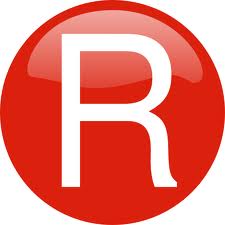A Case for cRm.
The technology that supports the interactions between a customer and a business have gone through all sorts of changes over  the past several decades. Advancements in technology, buyer behavior, high-level phenomenon like social media, etc. have all left their mark on CRM technology.
the past several decades. Advancements in technology, buyer behavior, high-level phenomenon like social media, etc. have all left their mark on CRM technology.
One could argue that in different phases of its evolution, each of the three initials of C-R-M have been the focus. For example, when application software was a nascent market, the simple fact of managing the data around a sales person’s activities (the”M” in CRM) was the focus. Prior to early CRM systems, pen and paper, and early unwieldy databases were the status quo. In short, there was very little focus on the customer and the relationship – just managing and trying to standardize processes and capturing actions. And to keep the “management” conceit going, most early CRM systems benefitted managers more than actual users. Users were forced to enter data, which benefitted management reports around company performance, rather than actually helping users do their jobs better.
As the web, service oriented architectures, the cloud and social media became commonplace, CRM started to become more about customer data. The addition of “the customer” (or the “C” in CRM) sounds ironic, but it was a novel change. Most CRM systems, as noted above, focused on the sales or support agent’s activities and workflow process management, management-level reports, etc. – NOT on optimizing the insights around customer histories to create meaningful experiences at every touch point. Adding the C is a great evolutionary step.
So that brings us to the “R” in CRM. As an industry we have mastered the management of data, and have gotten much better at including rich customer insights into processes and interactions. Evolving further, I think we are starting to actually focus better on the relationships customer have with businesses. That means more of a focus on the point of engagement, not on post-call data entry, or on batch-level rollup reports that tell us nothing in true detail.
Focusing on the relationship benefits both the customer and the actual front line users of a CRM system. The customer benefits because we have the previous addition of their data in the equation, and a focus on solving their problems and generally better meeting their needs right at the point of any engagement, across any channel. That’s good stuff. And by empowering users with the tools they need to better provide that level of service not later, not through 17 screens – but in a single, intuitive user panel that is accessible on any device – sales, marketing and support professionals can do their jobs better and with less stress and manual efforts. Also good stuff.
So, I argue that we are in the era of cRm: focusing on the Relationship aspect of customer interactions. Wether it is a one-time interaction, or a lifelong bond between a buyer and a brand – SugarCRM is looking to help organizations of all sizes optimize those relationships, wherever and whenever.
To learn more about how you can enhance relationships with CRM and related tools, join us for a webinar with Aberdeen Research’s Peter Ostrow titled Amplify the “R” in your CRM on Thursday, June 13th.

